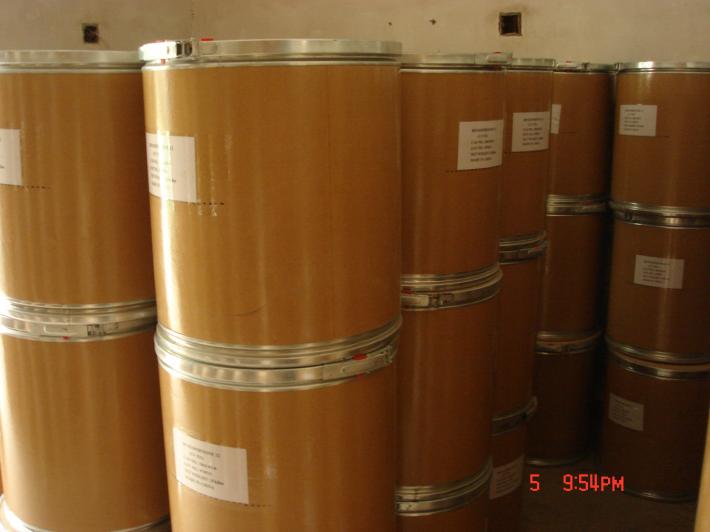一般评价一个工序的优劣,需要从成品质量、成本、设备成本等各方面综合考虑,我们今天就来讲一下
氢氧化钾的水银电解法的加工工序:
Generally, to evaluate the advantages and disadvantages of a process, we need to comprehensively consider the quality of finished products, cost, equipment cost and other aspects. Today, let's talk about the processing process of the mercury electrolysis method of potassium hydroxide:
水银电解法电解液的配制和隔膜电解法相同。电解室中以石墨或金属、作阳极,水银作阴极,电解生成的氯气送氯气干燥工序,生成的钾汞齐流入解汞室。还有大部分的氯化钾没有发生反应,再重新以淡盐水的状态经处理后,返回原料溶解工序。钾汞齐和清水发生反应生成氢氧化钾和氢气。因为从解汞室生出来的浓度为45%~50%,可当做液体产品进行使用,也可再经熬碱锅蒸浓成固碱或制成片状产品。
The preparation of the electrolyte of the mercury electrolysis method is the same as that of the diaphragm electrolysis method. Graphite or metal is used as anode and mercury is used as cathode in the electrolysis chamber. The chlorine generated by electrolysis is sent to the chlorine drying process, and the potassium amalgam generated flows into the mercury removal chamber. Most of the potassium chloride did not react, and then returned to the raw material dissolution process after being treated again in the state of dilute brine. Potassium amalgam reacts with water to produce potassium hydroxide and hydrogen. Because the concentration produced from the mercury dissolution chamber is 45%~50%, it can be used as a liquid product, or it can be evaporated into solid alkali or made into a flake product through an alkali boiling pot.
1、氯化钾溶液的精制
1. Refinement of potassium chloride solution
原材料氯化钾在化盐槽中进行溶化,并且添加碳化钾,氯化钡除去钙、镁和硫酸根等杂质,然后进入澄清槽,清液溢流而出,使用砂滤器过滤出轻微的悬浮物送入中和槽,加盐酸酸化流入精盐水储槽,经过盐水预热器用泵将精盐水打盐水高位槽,之后流入水银电解槽。澄清槽底部的盐泥,然后过滤回收其中的盐水,泥排掉即可。
The raw material potassium chloride is dissolved in the salt tank, and potassium carbide is added. Barium chloride removes impurities such as calcium, magnesium and sulfate, and then enters the clarification tank. The clear liquid overflows out. Slight suspended substances are filtered out by sand filter and sent to the neutralization tank. Hydrochloric acid is added to acidize the water into the refined brine storage tank. The refined brine is pumped to the brine head tank through the brine preheater, and then flows into the mercury electrolytic tank. Clarify the salt mud at the bottom of the tank, then filter and recover the salt water, and then discharge the mud.

2、电解
2. Electrolysis
水银电解槽分电解室和解泵室两部分。电解室中以石墨或金属作阳极,水银作阴极,通电后产生的氯气送氯气干燥工序,电解生成钾泵齐流入解泵室。大部分未反应的氯化钾以淡盐水状态经处理后:返回盐水工序。解泵室中,钾泵齐与端部清水反应生成氢氧化钾溶液流入电解液贮槽。解泵室产生的氢气送入到氢气输送站。
The mercury electrolytic cell is divided into two parts: electrolytic chamber and pump chamber. Graphite or metal is used as anode and mercury is used as cathode in the electrolysis chamber. Chlorine generated after electrification is sent to the chlorine drying process, and potassium generated by electrolysis is pumped into the pump chamber. Most of the unreacted potassium chloride is treated as dilute brine: return to the brine process. In the pump chamber, the potassium pump reacts with the end water to generate potassium hydroxide solution and flows into the electrolyte storage tank. The hydrogen generated in the pump chamber is sent to the hydrogen transmission station.
3、固碱
3. Solid alkali
从水银电解槽解泵室出来的含KOH45-50%的碱液,经熬碱制成固碱或经制片机制片成产品。
Alkali solution containing 45-50% KOH coming out of the mercury electrolytic tank pump chamber is made into solid alkali by boiling alkali or into products by film making machine.
The process of potassium hydroxide using mercury electrolysis is described above. Generally, it can be used to make liquid caustic soda and solid caustic soda, both of which can be used and sold. Come to our website for more relevant content http://www.jinhao360.com Ask about it!
 欢迎访问济南金昊化工有限公司网站!
欢迎访问济南金昊化工有限公司网站! 全国咨询热线:13869119097
全国咨询热线:13869119097 欢迎访问济南金昊化工有限公司网站!
欢迎访问济南金昊化工有限公司网站! 全国咨询热线:13869119097
全国咨询热线:13869119097